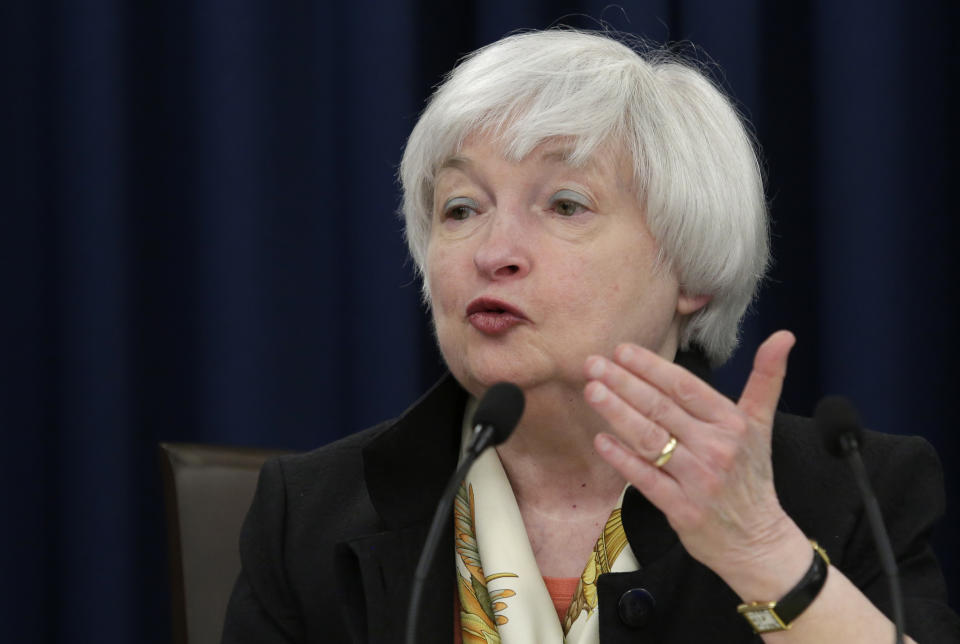What will the Fed do when recession strikes?

This week brings another chance for the Federal Reserve to tighten interest rates a notch. Will they do it? I don’t think so. Yellen and the other FOMC members are paralyzed. That’s a big problem, and here’s why.
At some point, the US economy will drop back into recession. Recessions happen every 7–10 years, and the last one ended in 2009. We’re already in the zone right now. Worse, a big part of the population will enter the next recession without having recovered from the last one.
What Will the Fed Do?
Until recently, the response was simple: cut interest rates. Whether that actually stimulates growth or not doesn’t matter. The Fed thinks it does, so it always cuts rates. You can see it in this chart. The shaded areas indicate recessions. The Fed cuts rates when a recession starts and hikes rates when it ends.
Something new happened after the last recession. The Fed didn’t hike as in the past, even though it cut rates far more this time—down to practically zero. Why?
We may never know the full answer. What we do know is that the Fed thought the economy still needed stimulating even with short-term rates near zero. Since rates couldn’t go below zero, the Fed tried “quantitative easing,” or QE. The Fed used excess bank reserves to buy trillions in Treasury bonds and mortgage-backed bonds.
To hear Fed officials tell it, QE did the trick. Now unemployment is below 5%, and inflation has been mild or non-existent. By Fed standards, this is nirvana. We should all be thrilled.
Well, we’re not thrilled. And the reason many of us aren’t thrilled is that 0% interest means we get next to nothing on our savings. As recently as 2007, you could earn 5% or more in risk-free bank CDs or Treasury bills. That’s right; 5% with zero risk.
Would you like to have that deal now? Too bad.
Fed defenders will argue the lack of earnings on savings is offset with lower rates on mortgages and car loans. But not everyone has a mortgage and/or a car.
Another benefit of low rates is that the biggest debtor of all, the US Treasury, has been able to borrow at historically low rates. This helps everyone by reducing the federal tax burden. True enough, but it still doesn’t help everyone equally. Retirees in low tax brackets get more punishment than reward.
Regardless of how the Fed justifies it, rates remain near zero and won’t get much higher in the near future. And if it doesn’t raise rates now, the Fed can’t cut them the next time we fall into recession—unless it is willing to go below zero. Hence, its present efforts to justify and prepare for negative interest rates.
The End of Retirement as We Know It
Will negative rates help? No, so the Fed will also launch more quantitative easing on an unimaginable scale, blowing up the Fed’s balance sheet to an unrecognizable size.
Unless there is considerable pushback from Congress—and I do mean considerable—we are going to see negative rates in the world’s reserve currency. The Fed, which has an almost religious faith in its theories, will justify this unprecedented move with research papers “proving” negative rates are just what we need.
Those papers won’t be worth the electrons used to publish them. Their conclusions will be theoretical blather, based on outmoded assumptions about the way the world works.
The European central bankers who are experimenting so exuberantly with negative rates came to Jackson Hole last month and told everyone their plans are working wonderfully. Never mind that cash-hoarding is at astronomical levels in Switzerland.
Negative rates will drive consumer spending down, not up. With less income (and possibly negative income), retirees will have to save more, work longer, and spend less.
Economic Hell Ahead
The next 10 years will see an explosion of government debt and an implosion of government’s ability to fulfill its promises. Any economic or investment model based on past performance under previous economic conditions will be worthless… just as worthless as the Federal Reserve’s models.
I am telling you, this will not end well. Don’t assume your future investment returns will look anything like they did for the last 20-30-40 years.
I know there are those out there who will tell you differently. Many of them are my friends, and I enjoy talking with them over a bottle of wine and a great meal. But I will look them in the eye and tell them that they’re walking with their eyes closed straight into economic hell. And everyone who follows them is going to see their portfolio go up in smoke.
The Fed is leading us into the most difficult investing environment of the last 100 years. Only a public outcry can stop it.
Subscribe to My Weekly Publication, Thoughts from the Frontline.
Follow me, as I uncover the truth behind, and beyond, the financial headlines in my free publication, Thoughts from the Frontline. Together, my readers and I explore developments that mainstream news sites overlook and analyze the many challenges and opportunities on the horizon. Join us!

 Yahoo Finance
Yahoo Finance 
